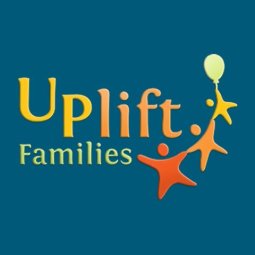A New Year usually signifies new beginnings. That brings with it great incentives for parents and families to get out of the starting blocks with fresh family goals. When teaching parents about setting goals in my parenting class, I would pour out pieces to a jigsaw puzzle and then hide the box with the picture on it. As parents entered the classroom, I would pick two individuals to come up to help me with the class. I instructed them to begin putting the puzzle together. Usually within minutes, they would ask me where the picture was. I asked them why they needed the picture, and of course they would reply that they wanted to see what the finished puzzle would look like.
In deciding what goals to make as a family it is crucial to look at the big picture and to know what the final outcome or “picture” will look like. Only then, can we structure goals to create the end result.
As an example, let’s say we want children to learn how to get along and not argue. Our final family picture may include children playing together while sharing their toys and not fighting about who goes first or who gets to be the leader. Knowing our final desired outcome, we begin together as a family to set individual goals to achieve the final result. Remember in our goal setting that everyone needs to feel empowered to help in the solutions.
-
First, we might discuss the situations and causes that lead to family arguments so that we understand the problems we are dealing with.
-
We can analyze consequences of arguments and family discord and think through how it effects each family member. Empathy is important here.
-
We can talk about possible solutions and how we can achieve them to get positive results.
-
Roll playing is a perfect way to learn problem solving skills and to decide ahead of time how to approach disagreements or hurt feelings before they escalate.
-
Teach children how to call time out before things escalate and calmly go separate ways. At times parents may need to help children in the communication phase.
-
Always evaluate how the family is doing and restructure the goals where needed.
Children and adults are both unique and complicated in their makeup, but the only way to make progress in putting together our puzzles is to SEE THE BIG PICTURE and make goals to make the picture come together.
By Margaret Wahlstrom

Margaret Wahlstrom and her husband of 44 years, Norman, are parents to seven children and have 24 grandchildren. Margaret has held leadership roles on local and state Utah PTA boards for 35 years. She was a trained and certified parenting instructor for over 10 years and is a regular volunteer and substitute teacher for the Davis County School District. As a member of the Utah PTA Legislative Action Committee, she worked on important legislation to benefit children and families. She has served on advisory boards for the Deseret News Media group, The Days of 47, and several governors’ education boards. She also developed and promoted programs in character education, the arts, suicide prevention, and internet safety. During the 2002 Winter Olympics, she helped on organizing committees.
Currently, Margaret works as Production Manager for the Clytie Adams School of Ballet Nutcracker. She also serves on First Lady Jeanette Herbert’s Uplift Families Board of Directors.

